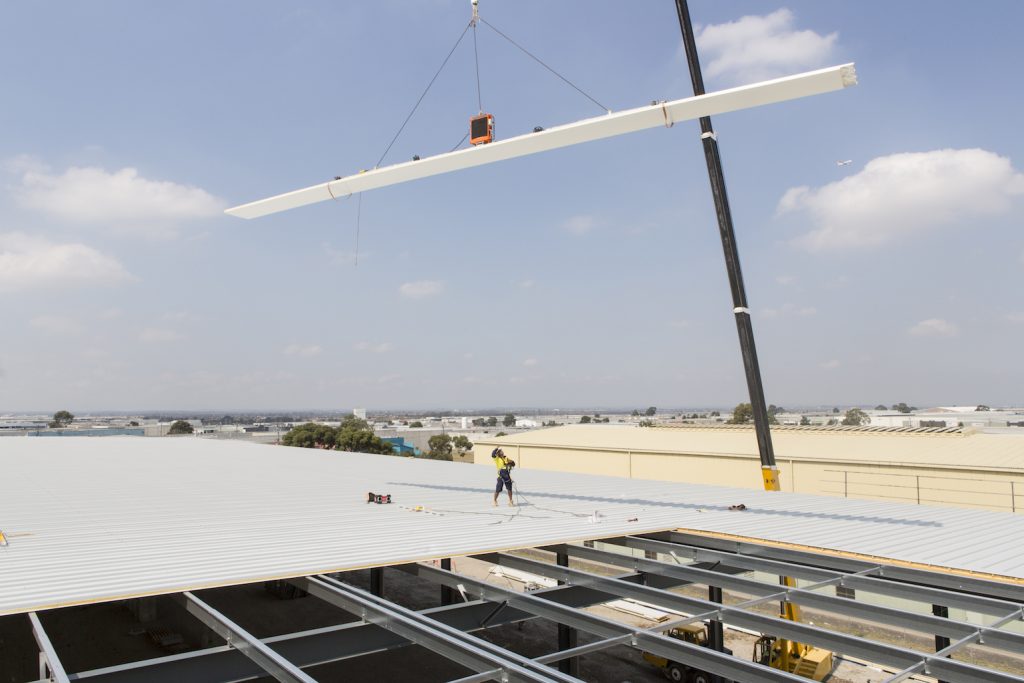A provision that came into effect 1 July 2021 formalises an important documentation process that can be quite onerous. However, there’s a way to make compliance simpler.
The construction industry is going through a period of reform, partially to address an increasing need for greater sustainability and energy efficiency, and partially to ensure safe building practices. Progress, innovation and safety haven’t always gone together. That’s why the National Construction Code (NCC) encourages innovation within a framework.
From 1 July 2021, that framework was tightened with the formalisation of processes and documentation requirements for the development of performance solutions. As a result, large and complex solutions can require a major performance-based design brief that demands a lot of documentation.
“Actually, this is not new, we have been encouraged to do this for some time,” says Homeira Aryanpad, civil structural engineer and National Technical Manager of Bondor/Metecno. “But it became mandatory on 1 July. As engineers, we sometimes get involved in contributing to the development of performance solutions. So it’s important that we understand the requirements.”
A four-step process
Whether an engineer specialises in structural integrity or fire safety, sustainability or HVAC, any performance solution in the construction arena now attracts a documented, four-step process. This is outlined in detail in Bondor-Metecno’s whitepaper Will Your Design Solution Perform on 1st July 2021? (free signup required).
Briefly, that process involves:
- A performance-based design brief identifying applicable NCC provisions
- A detailed analysis demonstrating the product meets all performance requirements, and outlining limitations and exclusions
- A robust evaluation process of the design proposal
- A final report that clearly demonstrates and confirms that the design will be acceptable and meet all performance requirements
“For an engineer, the analysis can be quite extensive,” Aryanpad says. “You need to have a clear understanding of all the relevant NCC provisions. You then need to look for pieces of evidence that demonstrate compliance to those provisions and verify them individually.”
This is where the hard work begins, says Aryanpad.
“For example, if you want to use a test report as a piece of evidence, you first need to validate the test report,” she says.
“From that point, information requirements continue to grow. You need to ensure you are looking at a relevant report from an accredited testing facility, that it is tested to the right standard, to the most up-to-date version of that standard, and that the test report hasn’t expired. You need to confirm that the correct product has been tested and that it captures any relevant product variations.”
There are a lot of questions involved in this process, says Aryanpad.
“Is the manufacturer producing the same product today that they produced when it was tested? Do they have any evidence to verify that? And have their suppliers been audited? These questions must be answered for each piece of evidence used to show compliance to each relevant NCC provision.”
Alternatively, you can simply use a building product that has earned a CodeMark certification.
The usefulness of CodeMark
CodeMark certification is a voluntary, third-party scheme for building products that provides a method for verifying that a building product meets the nominated requirements of the Building Code of Australia (BCA).
In terms of NCC provision A2.2(4) compliance, it automatically ticks numerous boxes, dramatically reducing the effort involved in gathering documentation and evidence.
“With a CodeMark certified product, the bulk of the work has been done for you,” Aryanpad says. “Our products need to be reviewed against several clauses of the NCC, including structural reliability, weather proofing, fire resistance and energy efficiency. To maintain our CodeMark certificates, they are checked and reviewed annually.”
“The certifying body goes through all of our test reports, independent certificates and assessment reports, not only checking their validity but also ensuring all certificates and assessments have been issued by appropriately qualified engineers who are experts in their fields.
“Every year a technical review is carried out. Our production facility and quality control process is also audited, as are our suppliers of critical components, which together with our manufacturing declaration statement, provide the assurance that our products will perform as stated.”
It’s vital that engineers are aware of the new, formal process and documentation requirements for the development of performance solutions as outlined in NCC 2019 A2.2(4). For greater clarity, download the white paper.

